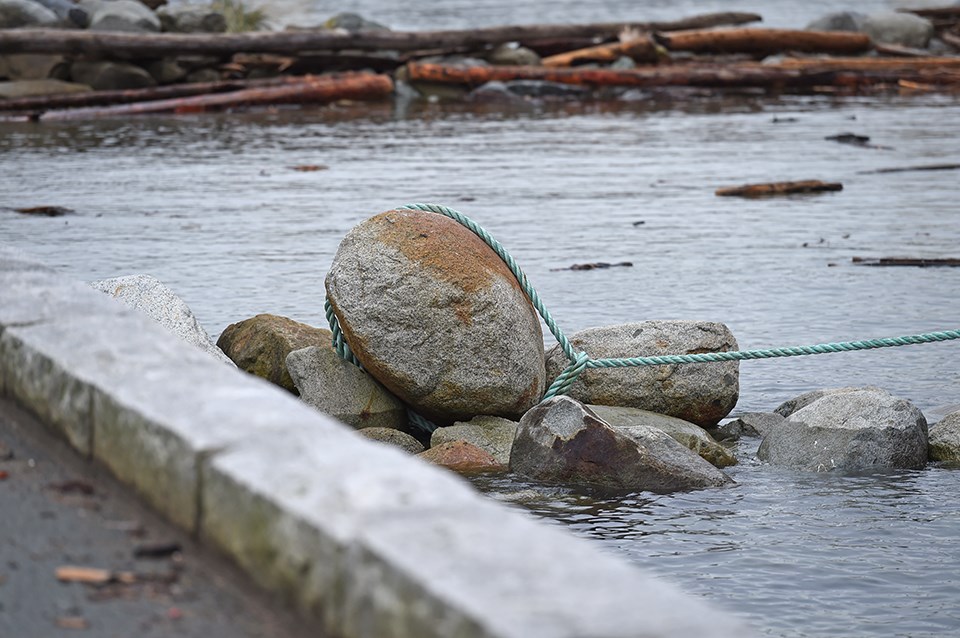That dinky line connecting the at least 1,500-tonne barge beached on English Bay to some riprap is not intended to prevent it from being salvaged by a maritime do-gooder.
Last week Vancouver Is Awesome ran a column calling whoever tied the two-inch-thick line from one of the barge's cleats to a small boulder on the shoreline a "folk hero and a genius". Since then V.I.A. received a tip that the line was actually placed there to prevent anyone trying to claim salvage rights by securing a line themselves.
Maritime salvage rights date back to the golden age of piracy and when cross-ship communication was made through the raising and lowering of flags. Essentially, marine salvage laws reward others to salvage abandoned, wrecked or in distress vessels while also protecting the salvors.
Darren Williams is a marine lawyer with the law firm of Williams & Company in Victoria. Williams explained in a recent interview with V.I.A. that since the rise of modern communication, vessel owners can be reached more easily and, when they are, they generally prefer their property to be left alone. Even still, salvage laws have maintained a belief that if it looks like a vessel is in trouble, you can preserve it and reap the rewards. In other words, tie it to the beach so it doesn't cause more damage.
'You might as well be using dental floss'
That belief is completely wrong, though, according to Williams, who says the act of putting a line on what is someone else's legal chattel is more akin to the crime of trespass. Nonetheless, the "myth" as Williams calls it, persists.
When Williams saw photos of the rope on the barge during V.I.A.'s phone interview he started to laugh, suspecting whoever put the line there did it as either a joke or on the mistaken belief that it was a legitimate salvage effort.
"I mean, you might as well be using dental floss," Williams said.
As it turns out, the barge's owners were the ones who put the rope there -- on orders from the Vancouver Fraser Port Authority.
"We did," a spokesperson for Marine Sentry Towing said. "The Port of Vancouver asked us to put a securing line in there for... I don't know... no real reason so we just threw a line on there to appease them."
Securing the barge
The Vancouver Fraser Port Authority, the federal agency responsible for the lands and waters that make up the Port of Vancouver, has been working with the Canadian Coast Guard and Transport Canada to monitor the barge situation. That said, the security and operation of the barge is the responsibility of the barge owner and crew.
"In the initial response to the grounding incident, the port authority advised the barge operator to secure the barge so it would not drift toward Burrard Bridge should it refloat during high tide," the port authority wrote in a recent email to V.I.A. "An unattended, drifting barge would have serious consequences to other port users and infrastructure."
Since then a follow-up assessment conducted by the port authority found the barge is firmly fixed to the shoreline and, as such, there was no need to secure it further.




